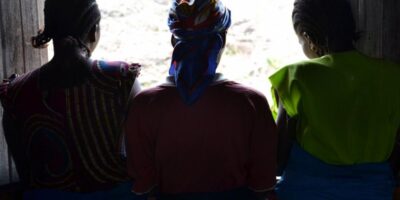The sector faces various problems, including the absence of equipment and a lack of training for breeders
According to industry players, aquaculture is stagnating in Haiti, jeopardizing hundreds of jobs in this sector – where fish or plants are produced in aquatic environments – in a context of food insecurity.
Launched in 2015, Taïno Aqua Ferme S.A, a fish farming company in Ganthier, is finding it almost impossible to hold on.
Due to the chaotic security situation reigning at Fond Parisien, staff are deserting the company.
“We have lost a lot of employees,” reports Gilbert Woolley, one of the founding members of the initiative. “Some [of these employees] migrated to the USA as part of the American government’s Humanitarian Parole program,” Wooley says.
Read also : L’insécurité met la petite industrie des fruits de mer à genoux
Although the company has benefited from customs exemptions and tax exemptions on the import of materials since 2015, this is no longer the case today. The 6-year exemption period, which could be renewed, expired in 2021.
According to its managers, Taïno Aqua Ferme S.A does not expect to produce 80 tonnes of fish in 2023, which marks a significant difference compared to previous years. Before 2020, the company supplied between 250 to 300 tonnes of fish per year.
Due to the chaotic security situation reigning in Fond Parisien, staff are deserting the company.
As a result, the company’s production has fallen by an estimated 80%. The little percentage that remains is used to ensure the survival of aquatic life. « It’s as if the company is dying, » continues Gilbert Woolley. « We’re trying hard not to let our ten years of hard work perish, » says the entrepreneur.
Historically, the first efforts to implement aquaculture in Haiti date back to 1950 with a project by the Food and Agriculture Organization (FAO). This specialized United Nations agency introduced fish farming in rural areas.
Later, in 1958, the Haitian State created the Fisheries Service at the Ministry of Agriculture, Natural Resources and Rural Development (MARNDR). This led to significant alevin and tilapia production across the country until the end of the 1960s. Interest in fish farming waned in 1970.
The first efforts to implement aquaculture in Haiti date back to 1950 with a project by the Food and Agriculture Organization (FAO).
In June 1985, the Ministry of Agriculture began a rural aquaculture project with the United Nations Development Program and the FAO, which helped attract the attention of some investors to the sector.
However, it was not until the early 1990s that the private sector showed real interest in the aquaculture sector.
Furthermore, an NGO led by an Ivorian entrepreneur, Caribbean Harvest, took the initiative in 2010 to develop aquaculture on Lake Péligre and a hatchery intended for the production of the Nile Tilapia species (Oreochromis niloticus).
Haiti consumes less seafood than its neighbors.
In 2015, according to FAO data, consumption of fishery products in Haiti amounted to 5.8 kg of fish per capita, compared to the Dominican Republic with its 8.7 kg, and the 25.8 kg from Jamaica.
The same year, products from aquaculture were estimated at 1,220 tonnes. According to World Bank data, aquaculture production in Haiti for the year 2019 was 1,610 metric tons.
It wasn’t until the early 1990s that the private sector showed real interest in the aquaculture sector.
In 2020, the World Bank estimated total fishing production at 17,910 tonnes.
Although the country has nearly 23,000 hectares of natural water bodies suitable for aquaculture, it only exploits 3% of this capacity with a focus on the exploitation of freshwater species, limited to hill lakes, according to data provided to AyiboPost by MARNDR.
However, many lakes in the country are affected by insecurity.
Miclo Joseph is a technician within the Ministry of Agriculture (MARNDR), who has worked for nearly thirty years in the seeding of lakes with fry in places such as Ganthier, the Etang Saumâtre, the Etang Lachaux in Camp-Perrin, La Voûte in Jacmel, the Bois Neuf pond in Saint-Marc, etc.
Today, due to the security situation in the country, “we certainly have the will, but we have no longer been able to continue to work since 2020,” declares Joseph.
Although the country has nearly 23,000 hectares of natural water bodies suitable for aquaculture, it only exploits 3% of this capacity.
Joseph Wilto Marcéus, fish farmer and president of the National Association of Haitian Fishermen (ANPH), started fish farming in 1991, in the Frère Francklin Armand lakes in Pandiassou, located in the heights of the Central Plateau.
“In previous years, the yield of Mozambican Tilapia (Oreochromis mossambicus) production was much higher than it is today,” says Marcéus. This situation is due, according to the professional, to climate change.
There is also small-scale aquaculture practiced in (concrete or earth) ponds on a family or village scale, the estimate of which has not been evaluated in Haiti.
The aquaculture sector could generate considerable profits.
With adequate support, local aquaculture production could help reduce the importation of fish and generate much more employment, analyzes entrepreneur Wooley Gilbert, cited above.
Read also: Au lieu d’investir dans la pêche en haute mer, Haïti importe du poisson
This sector suffers from a lack of recognition in Haiti. “The State has little interest in it,” underscores Jean Pierre Junior Domerçant, agricultural engineer, specializing in animal production. “So far, the Ministry of Agriculture has few statistics for this sector, which makes it quite difficult to measure its impact on the country’s GDP,” continues Domerçant.
An AyiboPost source within the Ministry of Agriculture also mentions a “lack of scientific data as a basis for decision-making”.
It should be noted that Haiti only exploits three types of farmed fish for aquaculture, reports agronomist Domerçant. They are Tilapia, Carp and Pangasius.
The sector faces various problems, including the absence of equipment (fish cages, etc.) and a lack of training for breeders. In addition, Domerçant underscores the destruction of mangroves for the supply of charcoal in certain regions which leads to the migration of fish towards the Dominican Republic.
English translation by Sarah Jean.
Cover image: Port with old fishing boats | © freepik
Watch this documentary produced by Ayibopost in February 2019, telling the captivating story of Taïno Aqua Ferme S.A. :
Stay in touch with AyiboPost through :
► Our WhatsApp channel : click here
► Our WhatsApp Community : click here
► Our Telegram canal : click here







Comments